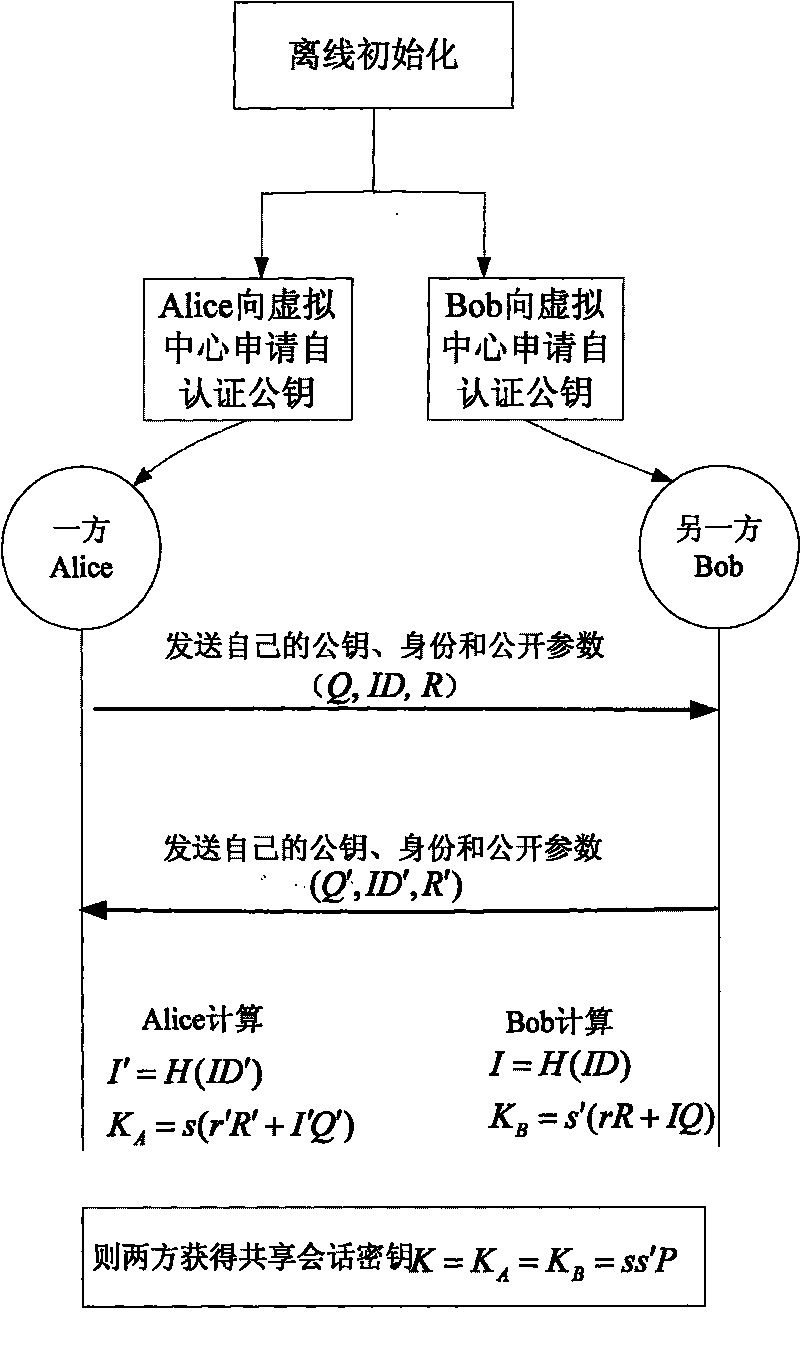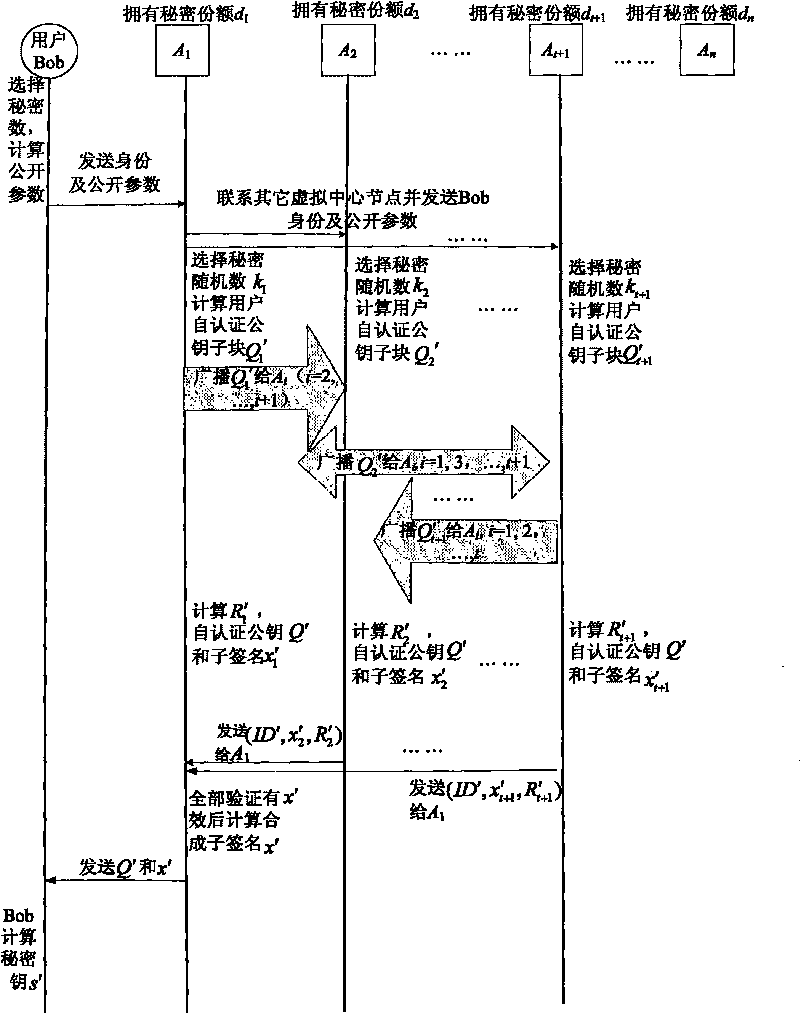Two-party key agreement method based on self-certified public key
A technology of key agreement and public key, which is applied in the field of network security, can solve problems such as large amount of calculation and communication, key escrow, and non-central security, and achieve the effect of improving calculation amount and communication amount and reducing storage
- Summary
- Abstract
- Description
- Claims
- Application Information
AI Technical Summary
Problems solved by technology
Method used
Image
Examples
Embodiment Construction
[0030] One, the applied mathematical theory of the present invention
[0031] (1) Elliptic Curve Cryptosystem ECC
[0032] Let p and q be large prime numbers, GF(q) is a finite field of order q, E is an elliptic curve on GF(q), E(GF(q)) is a cyclic group of order p formed by points on E, P∈ E(GF(q)) is the generator. For the definition of elliptic curve and the selection of security parameters, please refer to the literature: Don Johnson, Alfred Menezes and Scott Vanstone, The Elliptic Curve Digital Signature Algorithm (ECDSA), IJLS, vol.1 issue1 (2001), 36-63.
[0033] (2) Hash function
[0034] The Hash function is a function that transforms an input message of arbitrary length into an output message of fixed length, and this output is called the Hash value of the message. A secure Hash function should at least meet the following conditions: ①The input length is arbitrary; ②The output length is fixed, at least 128 bits long, so as to resist birthday attacks; ③For each giv...
PUM
 Login to View More
Login to View More Abstract
Description
Claims
Application Information
 Login to View More
Login to View More - R&D
- Intellectual Property
- Life Sciences
- Materials
- Tech Scout
- Unparalleled Data Quality
- Higher Quality Content
- 60% Fewer Hallucinations
Browse by: Latest US Patents, China's latest patents, Technical Efficacy Thesaurus, Application Domain, Technology Topic, Popular Technical Reports.
© 2025 PatSnap. All rights reserved.Legal|Privacy policy|Modern Slavery Act Transparency Statement|Sitemap|About US| Contact US: help@patsnap.com



